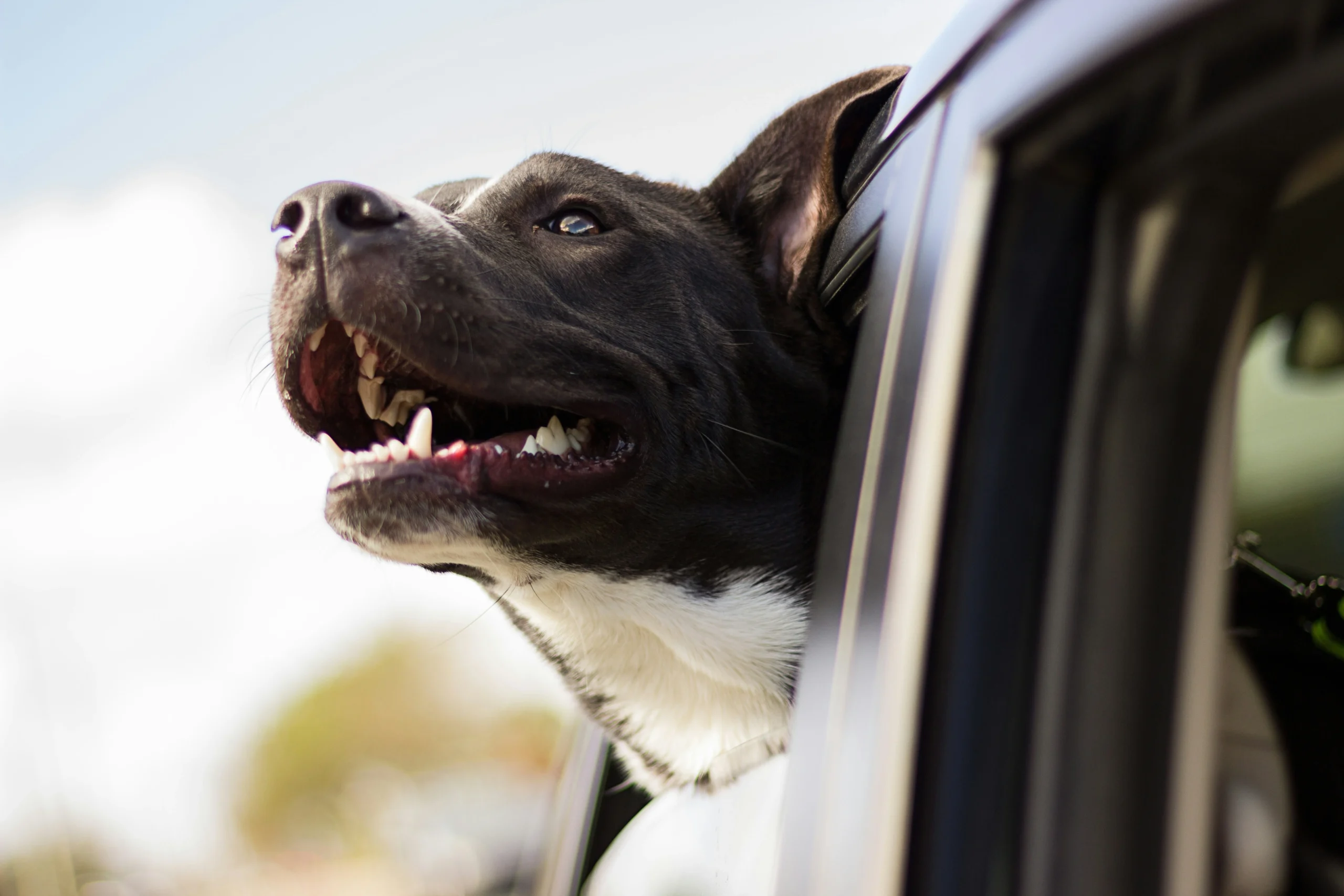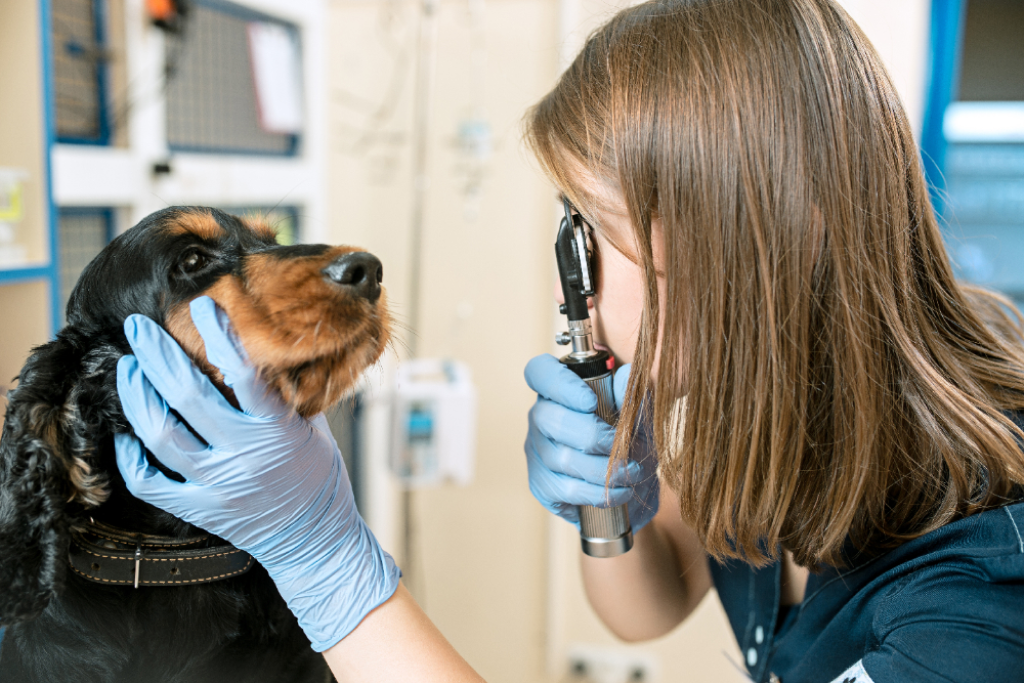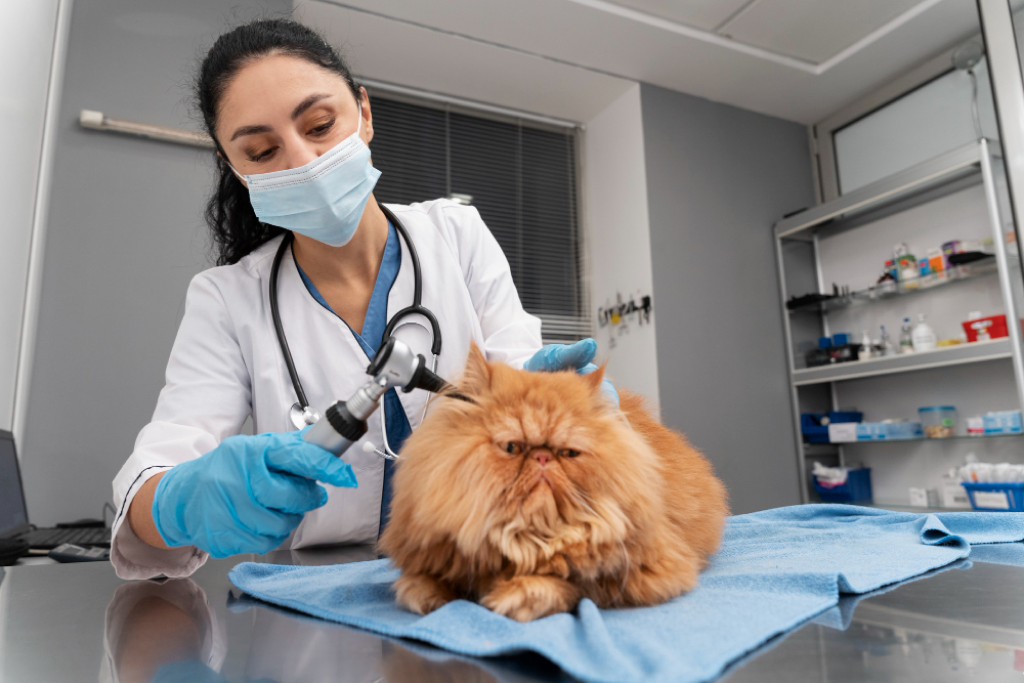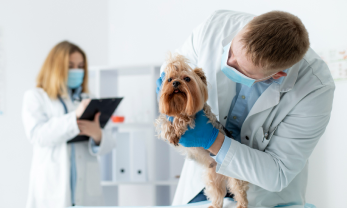Just like in humans, conjunctivitis in dogs is an uncomfortable inflammation of the eye that is relatively easy to spot with the presence of redness in or around the eyes. It can occur as a result of an underlying health condition or from a routine irritation or allergy. We explain more about the condition, but if your dog is experiencing any of the symptoms below don’t hesitate to book an appointment online or contact us here at Knutsford Vets.
What is conjunctivitis in dogs?
The conjunctiva is a thin membrane that lines the eyeball, the inside of the eyelids and the third eyelid. Conjunctivitis simply means inflammation of this membrane and it presents as a red, swollen eye, often with some discharge present.
What does conjunctivitis look like?
The condition is uncomfortable, so clinical signs such as increased blinking and squinting may be seen in addition to a discharge that may be watery, mucoid or mucopurulent from the affected eye(s). The conjunctiva will be swollen and red but this is not always obvious to look at them. Other signs such as coughing, sneezing and a runny nose can accompany the signs of conjunctivitis.
What causes conjunctivitis in dogs?
Conjunctivitis is only a description of the clinical signs and not a diagnosis. The common primary causes of conjunctivitis are allergies, bacterial and viral infections, tumours or hereditary conditions. Underlying conditions such as dry eye (keratoconjunctivitis sicca) can also result in inflammation of the conjunctiva.
Specific causes include:
- Immune mediated disorders such as allergic conjunctivitis (very common in pets with atopy and seasonal allergies), pemphigus and plasma cell conjunctivitis (in German Shepherds)
- Trauma to the eye from foreign bodies, smoke, concrete dust and other environmental contaminants
- Blocked tear ducts
- Turning out or turning in of the eyelid (ectropion/entropion) is commonly associated with certain breeds such as Mastiffs, Bulldogs and Newfoundland dogs.
- Distichia
- Ectopic cilia
- Tumours or the eyelid or conjunctiva (rare)
- Other eye conditions such as glaucoma
- Uveitis
How is conjunctivitis diagnosed?
We establish if the condition is primary or secondary, allergic, if there is additional disease or trauma to the eye and assess if any other structures around the eye are affected. This is achieved through a detailed ophthalmic examination assessing the eyelids, eyelashes, third eyelid, tear ducts etc. A schirmer tear test checks the correct volume of tears are being produced and dyes are used to check the integrity of the surface of the eye and that the tear film is working correctly. An intraocular pressure helps rule out uveitis and glaucoma and additional tests may include allergy testing, bacteriology and cytology of the conjunctiva and flushing of the tear ducts.
How do you treat conjunctivitis in dogs?
Treatment varies depending on the underlying condition and may include topical and/or oral medications. Topical medications include antibacterials, anti-inflammatories and medications to stimulate tear production if keratoconjunctivitis sicca is a factor. Where entropion, ectropion distichiasis and ectopic cilia are causes, surgical correction is required.
Will my dog recover from conjunctivitis?
Prognosis is good, however recurrent or chronic conjunctivitis carries a more guarded prognosis and certain conditions may require lifelong treatment.
Your experienced team at Knutsford Vets are on hand to answer any questions you have in regards to conjunctivitis in Dogs.








